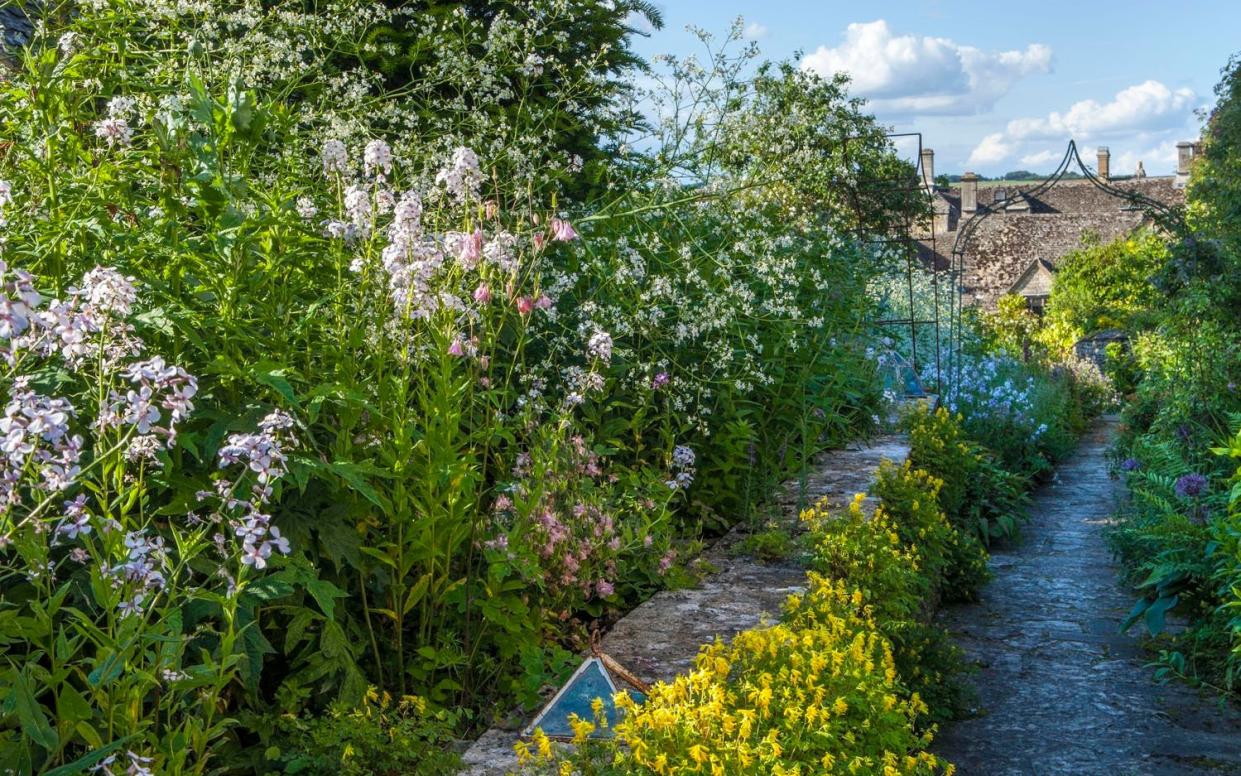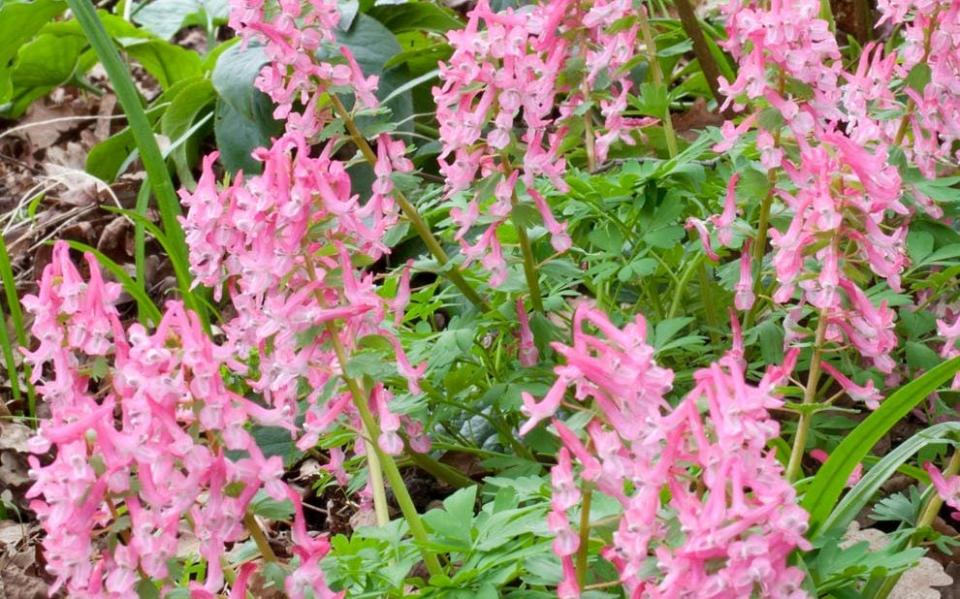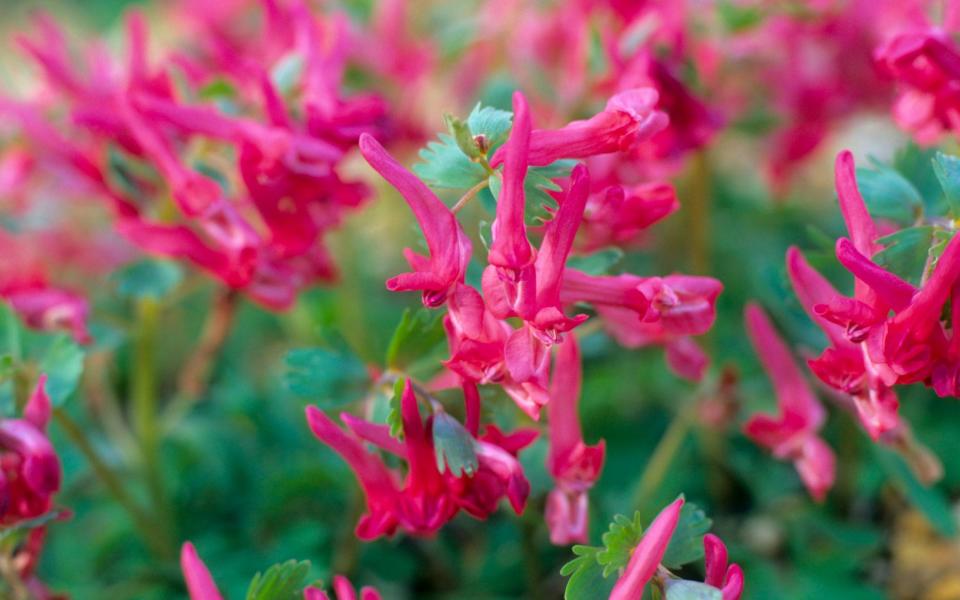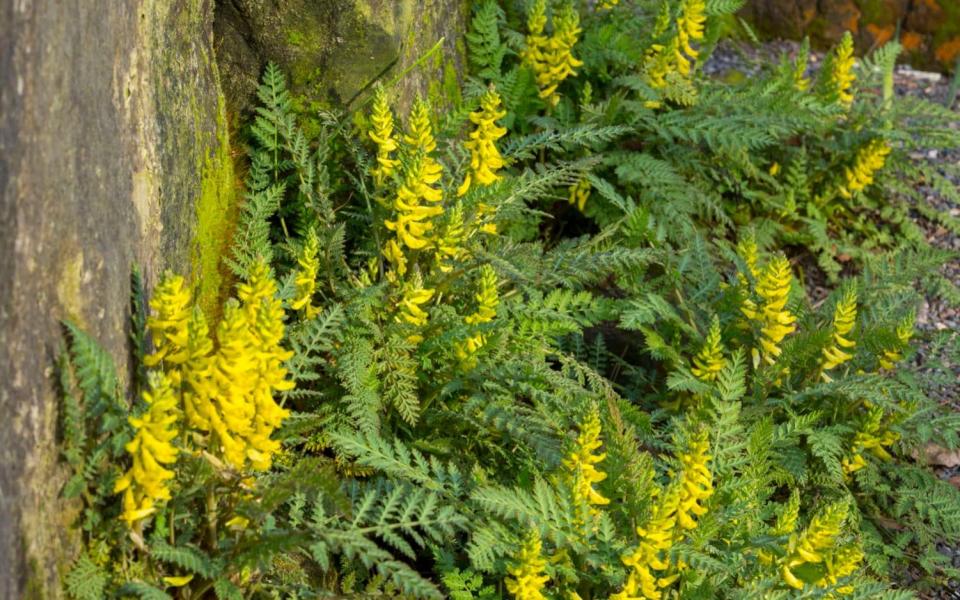Lovable rogues: five of the best corydalis varieties that like to suit themselves

Something wonderful arrived in the post this week: three little feathery clumps in 9cm pots, from the Beth Chatto nursery in Essex. The feathery clumps are Corydalis cheilanthifolia, a species of fumewort – similar but separate from close cousin, fumitory – that I have wanted to get my hands on for months. For me, this species is the zenith of its genus, raising yellow flowers to new heights and amplifying a characteristically delicate, pinnate foliage to the point of actually being mistaken for a fern. The leaves also redden for autumn. So a fern with flowers and autumn foliage; what more could you want in a plant?
Acquiring C. cheilianthifolia concludes my preoccupation with the corydalis clan, for now at least; a fixation that began with frequent sightings of rogue yellow C. lutea undermining London’s civic stone walls last summer, and continued through exotic cultivars of pink C. solida, electric blue C. flexuosa and a handful in between. I have now gathered a small collection at the Garden Museum – my most recent horticultural whim – sitting together in a quiet corner of its sheltered courtyard garden.
The clan belong to the poppy family, Papaveraceae, comprising a herbaceous rabble notable for their tubular, four-petalled flowers that, en masse, form a soft, frilly carpet. They hail predominantly from temperate Asia; China and Tibet in particular, where species number in the hundreds, but also East Africa, Iran and North America. Corydalis lutea, perhaps the species most commonly recognised, is an escapee from subalpine Europe that appears to thrive wherever it is not wanted. On account of this roguish behaviour, British gardeners often dismiss it as a weed, albeit an inoffensive one like herb Robert, common violet or garlic mustard.
Last year, however, I rescued a runaway C. lutea from the perils of a well-trodden pathway, stuck it in a small pot with a grit mulch and left it on a shady stone step. Unexpectedly, the little plant flourished into something very pretty.
The spring flowers were attractive, but the foliage more than warranted its place on permanent display, multilayered like a maidenhair fern yet bolder and, dare I say it, more elegantly splayed. Deadheading and the occasional removal of spent leaves kept it prospering through to winter: I became quite proud of my little experiment and repeated it in adjacent pots.
What intrigues me most about corydalis is this aptitude for mimicking the foliage of other plants, as apparent in their botanical designations. You have C. thalictrifolia, for example, with leaves resembling thalictrum and C. rutifolia reminiscent of rue. C. anthriscifolia does a wonderful cow parsley impersonation while C. chelidoniifolia is named for its likeness to greater celandine, Chelidonium majus.
My Corydalis cheilanthifolia apparently takes after a genus of sweet little rock ferns called Cheilanthes. Looking them up, the similarity is really quite something, the fumewort uncannily frond-like for a plant so taxonomically polar.
Corydalis experienced a renaissance in gardens during the 1980s and 1990s as new species came into commercial cultivation. Loud colours caused a stir: hues ranging from deep red and purple to brilliant white, sprouting quickly and generously from a bulbous root system. Prior to lockdown I visited a garden in Suffolk all but neglected for over a decade.
Under the dappled deciduous shade of an ageing hazel, pink and white C. solida ran riot: the effect was absolutely mesmerising. This is how you’re likely to encounter fumewort, overjoyed at being left alone in a pleasant enough spot with available moisture in the soil. Indeed, at the Beth Chatto Gardens it is the intermediate site their corydalis prefer – somewhere in between the extremes of shady woodland and exposed gravel.
The task this week has been to find a suitable home in the museum garden for my latest purchase. Visually, C. cheilanthifolia’s “fernliness” suggests an Arcadian approach, fitting them between crumbling ledger stones (the museum gardens occupy a 17th century churchyard) in the Georgian romantic style.
Horticulturally, however, their needs are not as straightforward as ferns. On the whole, corydalis delight in a confusing range of site preferences. Look up most species in any given plant-finder and you’ll be presented with such ambiguous specifications as: “exposed or sheltered”; “sand, chalk or clay”; “sun, shade or both”.
The correct answer ought really be “wherever they choose”, as, being devoted self-seeders, corydalis prefer to place themselves rather than be placed, however inconvenient the favoured spot (I refer back to wall crevices and well-trodden pathways…). With this in mind, I am hedging my bets across three independent locations: one in a pot, another pressed into a west-facing wall (beside some adventitious C. lutea), and the third in cool soil, peeping out from a southern-lit tombstone.
May the happiest win, and, with a bit of luck, self-seed a rambunctious new colony.
Undoubtedly, I have taken great pleasure from growing fumewort in pots (mine are individually planted, but they would look just as good grouped below a potted shrub). In this way the full plant is exhibited, in all its fine-foliaged glory, and may benefit from free-draining compost and considered watering.
Besides ferny C. cheilanthifolia, I suggest trying the popular C. flexuosa cultivar ‘China Blue’, or C. solida ‘White Knight’ for its prominent white flowers. C. anthriscifolia is next on my wishlist for interesting foliage, while in the greenhouse I’ll be sowing the striking purple-pink Corydalis hyrcana.
The beauty of these plants is that they are compact and travel easily. They are the perfect choice, therefore, for home delivery: lovable rogues to lift the spirits.
Matt Collins is head gardener at the Garden Museum in London. Follow Matt on Instagram: @museum_gardener
C. solida 'Beth Evans'

C. solida ‘Harkov’

C. solida ‘George Baker’

Corydalis cheilanthifolia

Corydalis lutea




